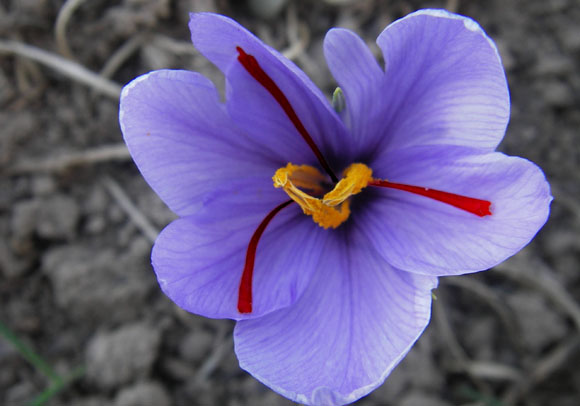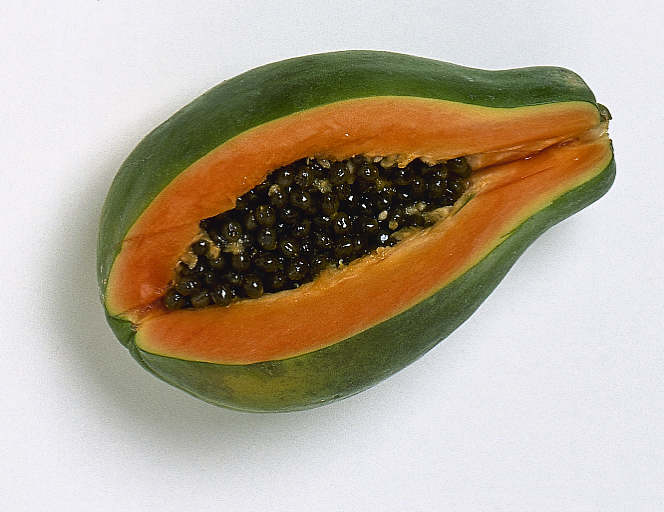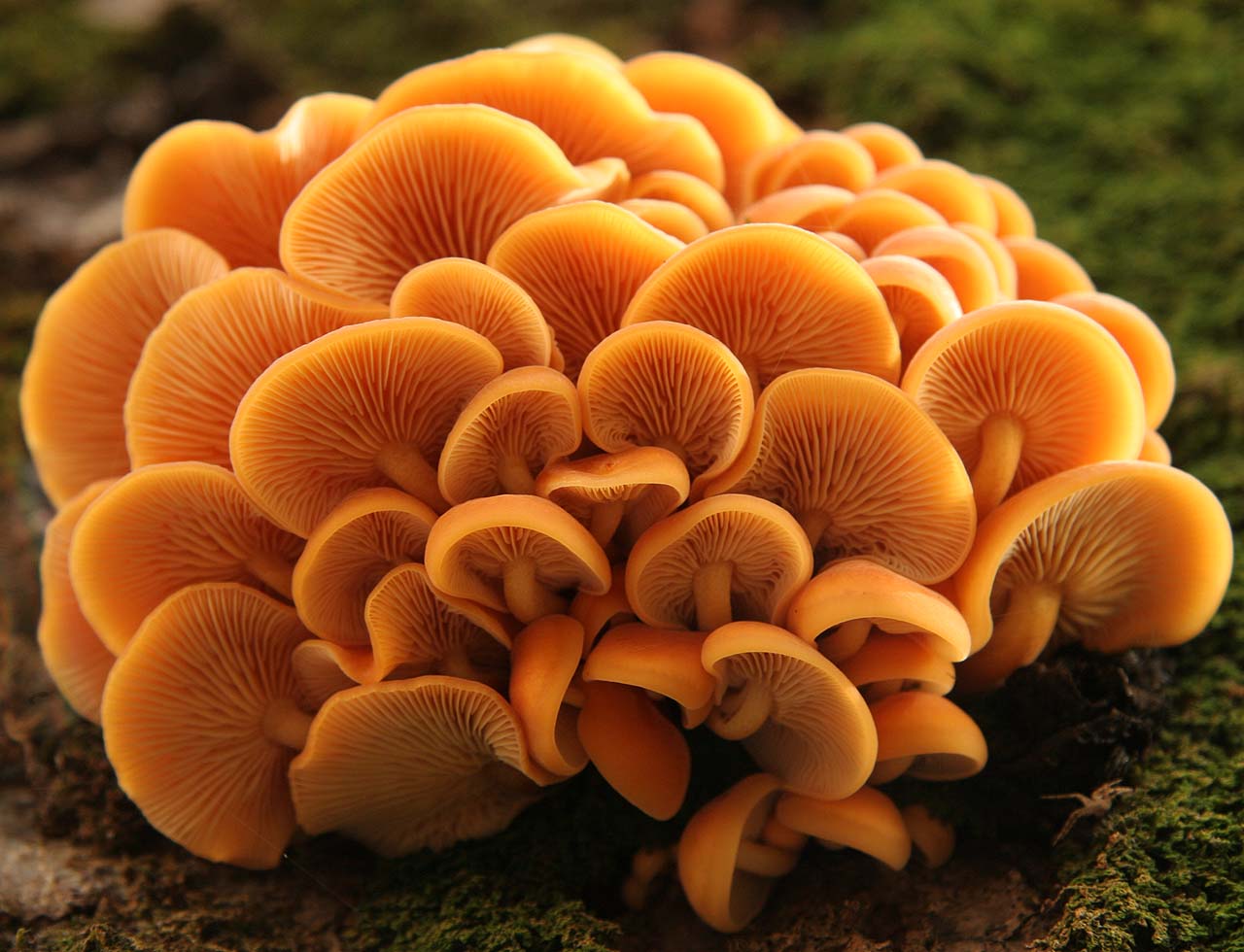Flower EncyclopediaENTER THE WORLD OF FLOWERS |
Other News
Crocus sativus
Category: Bulbs and tubers
05 Apr : 14:47
To view pictures click on them







 Saffron crocus (Crocus sativus) is a cultural form of the family Iridaceae Crocus (Iridaceae). The three stigmas of the flower (the distal ends of pistils - the female reproductive organs of the plant) and part of his neck (a stalk connecting stigmas to the rest of the plant) is dried and used in cooking as a spice and dye.
Saffron crocus (Crocus sativus) is a cultural form of the family Iridaceae Crocus (Iridaceae). The three stigmas of the flower (the distal ends of pistils - the female reproductive organs of the plant) and part of his neck (a stalk connecting stigmas to the rest of the plant) is dried and used in cooking as a spice and dye.Saffron, which has for decades been the most expensive spice in the world by weight, is native to Southwest Asia. Cultivated for the first time in the region of Greece.
Its colors are purple color and shape of a star. Dissolve during the night. Its delicate flowers are hand picked and dried stigmas. We need more than 150 000 plants to obtain 1 kg of saffron, which makes it the most expensive spice in the world. Rather only ¼ teaspoon saffron is enough to give flavor and aroma of the dish for 6 people.
The word saffron comes from the Old French term of 12 century "safran", which comes from the Latin "safranum". "Safranum" is also linked with the Italian "zafferano" and Spanish "azafrán". "Safranum" comes from the Arabic word "asfar", which means "yellow" by paronimnoto "za'faran", the name of the spice in Arabic.
| asfar iridaceae crocus sativus |
Comments are turned off for this item0
| asfar iridaceae crocus sativus |
Carica papaya
Category: Exotic fruits and vegetables
05 Apr : 14:15
To view pictures click on them




 Papaya (Carica papaya) is a tropical tree, growing in hot, humid areas of Central and South America, South Africa and Southeast Asia. This is known under different names - often referred to as "tree melons (in China and Sri Lanka) or" fruta bomba "in Cuba, Lechosa in the Dominican Republic, but most used Caribbean has had his name" papaya ", as Europeans first discovered this fruit that is in the Caribbean.
Papaya (Carica papaya) is a tropical tree, growing in hot, humid areas of Central and South America, South Africa and Southeast Asia. This is known under different names - often referred to as "tree melons (in China and Sri Lanka) or" fruta bomba "in Cuba, Lechosa in the Dominican Republic, but most used Caribbean has had his name" papaya ", as Europeans first discovered this fruit that is in the Caribbean.Pope reaches a height of between 5 and 10 m and fruits are round or elongated shape with the leaf and bark pinkish-orange inside, a taste similar to a mixture of melon and peach. Inside, containing many black seeds that are used dried and ground as a condiment. The fruit is highly valued because of their high content of vitamins (A, B, C, D and E), minerals (calcium, potassium, phosphorus) and micronutrients (iron, zinc, manganese, copper, vanadium, magnesium). Therefore be used with curative intent for the disposal of toxins from the body, improve digestion, in liver diseases, viral hepatitis and others. Consumed as fruit mature (in desserts, cakes, fruit salads) and more immature as garnish.
| fruta bomba papaya fruit time europeans enzyme papain liver diseases |
Comments are turned off for this item0
| fruta bomba papaya fruit time europeans enzyme papain liver diseases |
Flammulina velutipes
Category: Mushrooms
05 Apr : 13:47
To view pictures click on them






 Sponge of the genus Flammulina K A R S T.
Sponge of the genus Flammulina K A R S T.In Japan is forcing the culture of the fungus called variant Enokitake which in appearance is quite different from the forest mushroom. In the absence of light in keeping it painted entirely in white, but because of the growing agglomerate and jars having a cylindrical shape.
Characteristics
Hood:
Diameter of cap is 3 to 6 cm is initially hemispherical, later stretched to almost flat. Sometimes slightly curved tip with the center. Straw, to mednozhalta zhaltokafenikava color. In the middle is darker. The surface is smooth, naked, slizesta and glossy. Edge in young age is tucked inside, and later faced equal or slightly valnoviden with pronounced radial ribs.
Meat:
The meat is thin, soft, fragile, later fibrous. Whitish to pale pink.
| pink lamellae genus flammulina radial ribs cylindrical shape autumn and winter |
Comments are turned off for this item0
| pink lamellae genus flammulina radial ribs cylindrical shape autumn and winter |
























































